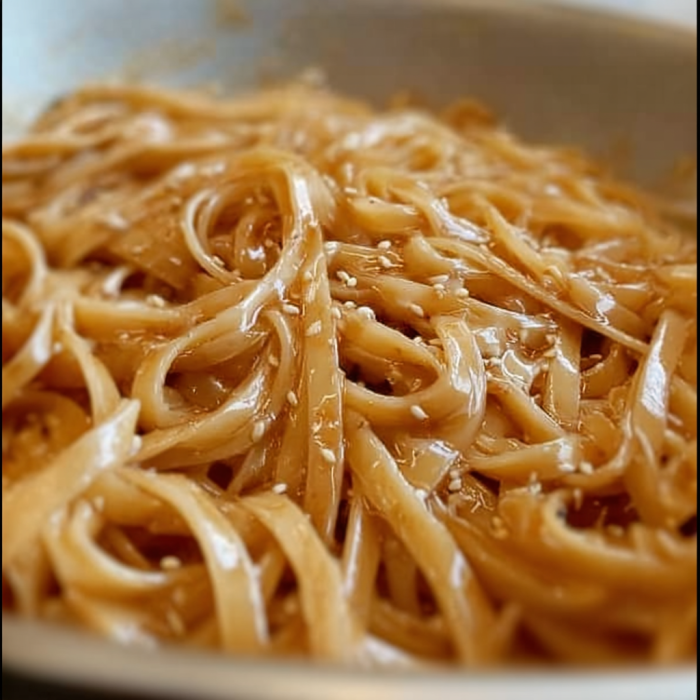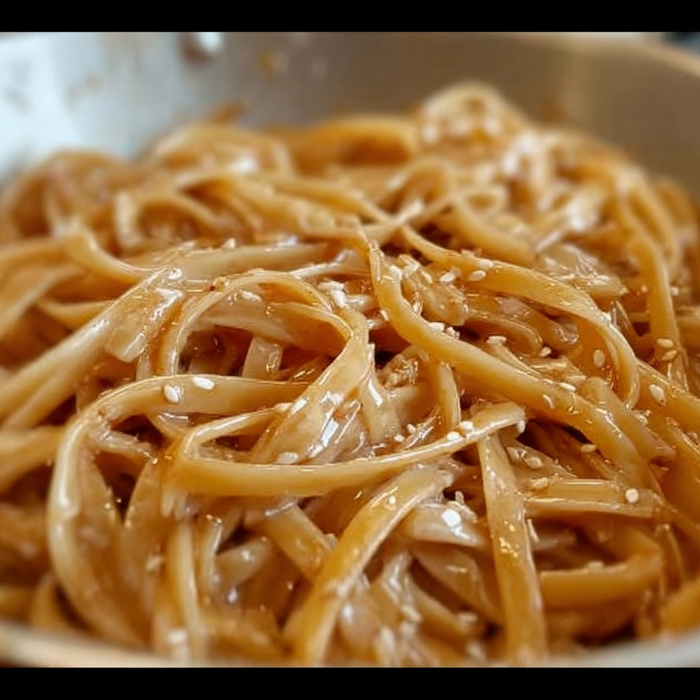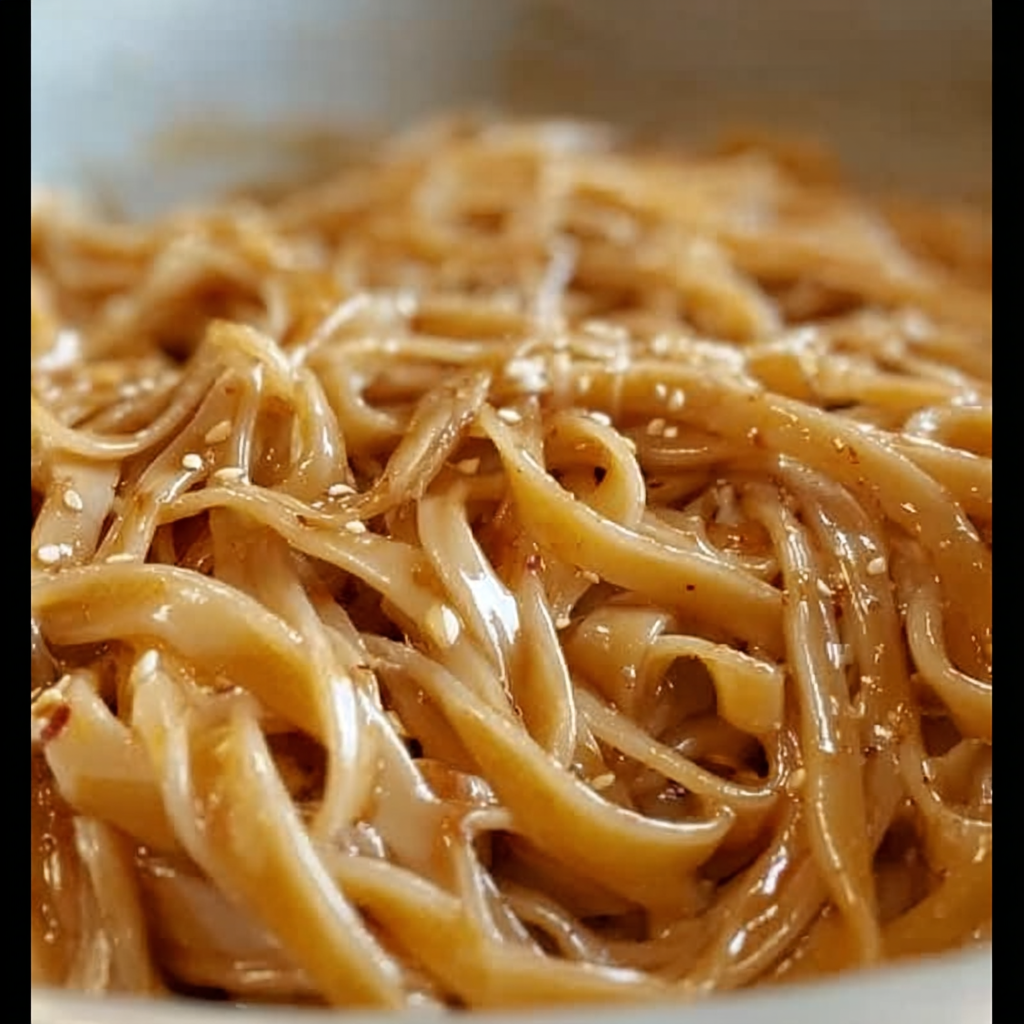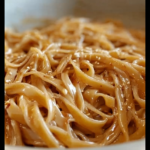What’s the deal with these noodles?
Okay, so you know that moment at the hibachi restaurant when the chef starts tossing noodles around on that blazing hot grill and your mouth starts watering before they even hit your plate? Yeah, I’ve been trying to recreate that magic at home for YEARS. After way too many failed attempts (and a few smoke alarm incidents), I finally cracked the code. These noodles have that perfect chewy texture, smoky flavor, and that addictive savory-sweet sauce that’ll have you making excuses to cook them again tomorrow.
Why You’ll Love This Recipe
Trust me, once you make these, you’ll never want to pay restaurant prices for hibachi again:
- They taste EXACTLY like the restaurant version (seriously, my brother-in-law didn’t believe I made them)
- Takes about 20 minutes from start to finish – faster than ordering takeout
- You probably have most of the ingredients already hanging out in your pantry
- They reheat beautifully, so meal prep people, this one’s for you
- The technique is simple but looks super impressive when you’re cooking for others
- Way cheaper than going out, and you can make them as often as you want
- Totally customizable – throw in whatever protein or veggies you’ve got lying around
The Good Stuff You’ll Need
For the Noodles:
- 12 oz yakisoba noodles (fresh is best, but dried works – found in the Asian section)
- If you can’t find yakisoba: use lo mein noodles, or even thick spaghetti in a pinch
- 2 tablespoons vegetable oil (something with high heat tolerance – no olive oil here!)
- 1 tablespoon sesame oil (this is where the magic happens)
For the Sauce (the real MVP):
- 3 tablespoons soy sauce (low sodium if you’re watching salt)
- 2 tablespoons oyster sauce (adds that umami depth – don’t skip this!)
- 1 tablespoon butter (yeah, butter in Asian noodles – trust the process)
- 2 teaspoons sugar (balances out the salty stuff)
- 1 teaspoon garlic powder (fresh garlic burns too easily on high heat)
- 1/2 teaspoon black pepper (more than you think you need)
- Pinch of salt (taste and adjust)
The Mix-Ins:
- 1 large onion, sliced thin (the thinner the better for that hibachi vibe)
- 2 cups cabbage, roughly chopped (adds that perfect crunch)
- 2 carrots, julienned or thinly sliced
- 3 green onions, chopped (save some for garnish)
- Optional protein: chicken, shrimp, beef, or tofu (about 1 lb, cut into bite-sized pieces)
For the Garnish:
- Extra green onions
- Sesame seeds (toasted if you’re feeling fancy)
- A squeeze of fresh lime (game changer!)
Let’s Make Some Magic
Prep Everything First (10 minutes):
- If you’re using dried yakisoba noodles, get them cooking according to package directions. Fresh noodles just need a quick rinse and they’re ready to go.
- Mix all your sauce ingredients in a small bowl and set aside. Seriously, do this now – once you start cooking, everything happens FAST.
- Get all your veggies chopped and ready. If you’re adding protein, season it with a little salt and pepper.
The Sizzle Starts Now (10 minutes):
- Heat your biggest skillet or wok over HIGH heat. I mean HIGH. We want that thing smoking hot. If you don’t have a wok, a large cast iron skillet works great.
- Add the vegetable oil and let it heat until it’s shimmering (about 30 seconds).
- If you’re using protein, toss it in first. Don’t crowd the pan – work in batches if needed. You want a nice sear, not steamed sad protein. Remove and set aside once cooked through.
- Add the onions to the same pan. They’ll sizzle like crazy (that’s what we want!). Cook for about 2 minutes until they start to soften and get those beautiful caramelized edges.
- Toss in the carrots and cabbage. Stir-fry for another 2-3 minutes. The cabbage should still have some crunch to it.
Noodle Time (5 minutes):
- Add your cooked noodles to the pan. If they seem stuck together, use tongs to separate them gently.
- Pour that beautiful sauce mixture over everything. Add the sesame oil now too.
- Toss everything together like you’re putting on a show (because you kind of are). Use tongs or two spatulas to keep everything moving.
- Add your cooked protein back in if using, along with most of the green onions.
- Keep tossing and cooking for another 2-3 minutes until the noodles are heated through and have absorbed some of that sauce.
The Grand Finale:
- Taste and adjust – need more soy sauce? More pepper? This is your moment to make it perfect.
- Serve immediately while everything’s still sizzling hot. Top with remaining green onions, sesame seeds, and that squeeze of lime.
Serving Suggestions
- These are honestly perfect on their own, but if you want the full hibachi experience, serve with some fried rice and that ginger salad dressing for dipping veggies.
- A cold beer or hot sake pairs amazingly with these noodles.
- If you’re meal prepping, portion them into containers while still warm. They reheat great in the microwave (add a splash of water) or back in a hot skillet.
- Want to make it a complete meal? Add some edamame on the side and maybe some gyoza if you’re feeling ambitious.
Switch It Up
Got the basic recipe down? Time to get creative:
- Spicy Version: Add sriracha or chili garlic sauce to the sauce mixture. Start with a teaspoon and work your way up.
- Protein Party: Try a mix of chicken and shrimp, or go full vegetarian with extra-firm tofu and mushrooms.
- Veggie Heaven: Add broccoli, snap peas, bell peppers, or whatever’s in your fridge that needs using up.
- Seafood Special: Scallops and shrimp with a splash of mirin in the sauce – fancy pants hibachi right here.
- Breakfast Noodles: Top with a fried egg and some crispy bacon. Don’t knock it ’til you try it.
- Korean Fusion: Add kimchi and a drizzle of gochujang for a spicy, fermented twist.
Make-Ahead and Storage
- You can prep all your veggies and make the sauce up to a day ahead. Store everything separately in the fridge.
- Cooked noodles keep in the fridge for up to 4 days. The flavors actually get better after sitting overnight.
- To reheat: microwave with a splash of water for 60-90 seconds, or toss back in a hot skillet for a few minutes.
- These don’t freeze super well because of the texture of the noodles, but they’re so quick to make fresh that it’s not really a problem.
Questions People Actually Ask
Q: I can’t find yakisoba noodles anywhere. What else can I use?
A: Lo mein noodles are your best bet, followed by thick udon noodles. In a desperate situation, thick spaghetti works but cook it just shy of al dente since it’ll cook more in the pan.
Q: My noodles are sticking together and getting mushy. What am I doing wrong?
A: Two things: make sure your pan is HOT enough, and don’t overcook the noodles initially. They should still be slightly firm when you add them to the pan because they’ll finish cooking in the sauce.
Q: Can I make this without a wok?
A: Absolutely! A large cast iron skillet or even a big non-stick pan works fine. You just want something that can handle high heat and gives you room to toss everything around.
Q: The sauce seems too salty/sweet/bland. Help!
A: Start with less sauce than you think you need – you can always add more. Taste as you go and adjust with more soy sauce (salty), sugar (sweet), or butter (richness). A squeeze of lime can brighten everything up too.
Q: Is there a way to make this healthier?
A: Use less oil, load up on the vegetables, choose lean proteins, and you can try substituting some of the regular noodles with shirataki noodles or zucchini noodles (though the texture will be different).
Q: My smoke alarm keeps going off when I make this. Normal?
A: Ha! Yeah, that happens. Make sure your exhaust fan is on high, and maybe crack a window. The high heat is essential for that authentic hibachi flavor, so the smoke is kind of part of the deal. Just be ready for it!
Sizzling Hibachi Noodles Recipe You’ll Crave All Week
Description
Okay, so you know that moment at the hibachi restaurant when the chef starts tossing noodles around on that blazing hot grill and your mouth starts watering before they even hit your plate? Yeah, I’ve been trying to recreate that magic at home for YEARS. After way too many failed attempts (and a few smoke alarm incidents), I finally cracked the code. These noodles have that perfect chewy texture, smoky flavor, and that addictive savory-sweet sauce that’ll have you making excuses to cook them again tomorrow.
Ingredients
For the Noodles:
- 12 oz yakisoba noodles (fresh is best, but dried works – found in the Asian section)
- If you can’t find yakisoba: use lo mein noodles, or even thick spaghetti in a pinch
- 2 tablespoons vegetable oil (something with high heat tolerance – no olive oil here!)
- 1 tablespoon sesame oil (this is where the magic happens)
For the Sauce (the real MVP):
- 3 tablespoons soy sauce (low sodium if you’re watching salt)
- 2 tablespoons oyster sauce (adds that umami depth – don’t skip this!)
- 1 tablespoon butter (yeah, butter in Asian noodles – trust the process)
- 2 teaspoons sugar (balances out the salty stuff)
- 1 teaspoon garlic powder (fresh garlic burns too easily on high heat)
- 1/2 teaspoon black pepper (more than you think you need)
- Pinch of salt (taste and adjust)
The Mix-Ins:
- 1 large onion, sliced thin (the thinner the better for that hibachi vibe)
- 2 cups cabbage, roughly chopped (adds that perfect crunch)
- 2 carrots, julienned or thinly sliced
- 3 green onions, chopped (save some for garnish)
- Optional protein: chicken, shrimp, beef, or tofu (about 1 lb, cut into bite-sized pieces)
For the Garnish:
- Extra green onions
- Sesame seeds (toasted if you’re feeling fancy)
- A squeeze of fresh lime (game changer!)




